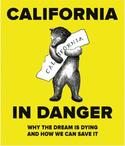"Southern California is man-made, a gigantic improvisation” — Carey McWilliams, Southern California: An Island on the Land, 1946
Largely invented, a semi-desert far from the metropolitan heartland of the nation, Southern California has relied on a combination of engineering genius and marketing bravado. The constructed infrastructure has become creaky, but still functions. Not so our sense of marketing our region to the rest of the world — and ourselves. read more »





















